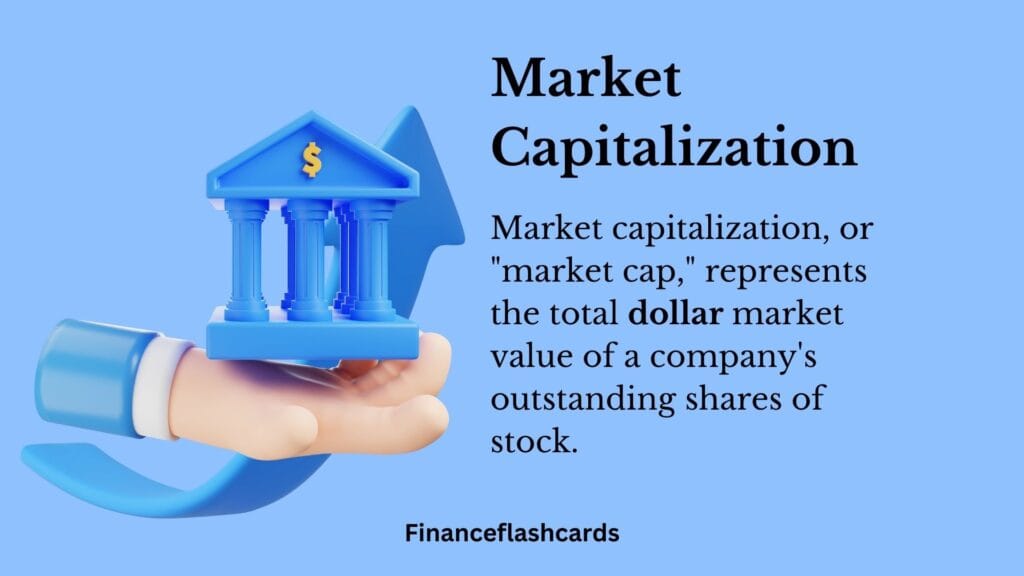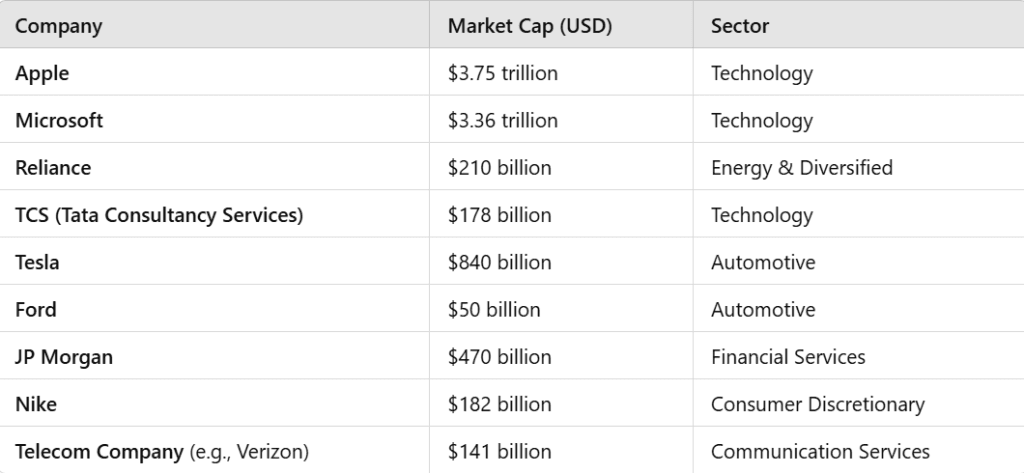Market Capitalization (Market Cap) is the most recent market value of a company’s outstanding shares. The Market Cap is equal to the current share price multiplied by the number of shares outstanding.
Table of Contents
What Is Market Capitalization?
Market cap, short for market capitalization, is the total value of a company’s shares of stock. Essentially, it reflects the market’s perception of a company’s worth and is used to classify companies into categories like large-cap, mid-cap, and small-cap.
Market cap helps investors understand the size and stability of a company, with larger companies often seen as more stable, while smaller ones may have higher growth potential but come with more risk.
The investing community often uses market capitalization value to rank companies and compare their relative sizes in a particular industry or sector.

How to Calculate Market Cap
To calculate market cap (market capitalization), you multiply the current share price of a company’s stock by the total number of outstanding shares.
Market Cap = Current Share Price * Total Number of Shares Outstanding
Here’s the process in simple steps:
Find the current share price: This is the price of one share of the company’s stock, which can be found on stock market platforms or financial websites.
Determine the total number of outstanding shares: This is the number of shares the company has issued and is held by all shareholders, including the public and institutional investors.
Multiply them together: Multiply the share price by the total number of shares.
For example, if a company has 1 million outstanding shares and each is priced at $50, its market cap is $50 million.
Market Capitalization Categories
- Large Cap – Companies with a market cap above $10 billion(>Rs.8000 Cr.) are classified as large-cap stocks. Some examples would be Microsoft, IBM, Apple, etc.
- Mid-Cap – Companies whose market cap ranges from $1 billion to $10 billion(Rs 800-8000 Cr.) Mid-cap stocks, in general, are more volatile than large-cap stocks and consist more of growth-oriented stocks.
- Small Cap – Companies with a market capitalization between $250 million to $1 billion(Rs. 25-800 Cr.) They are high-risk and high-return stocks, as the companies are in the growth stage. A large number of companies belong to the small-cap category.
- Micro Cap – They are the penny stocks that are relatively young. The micro-cap companies’ potential for growth and decline are of a similar nature. They are not considered to be the safest investment. Hence, they require lots of research before investment.

What Does a High Market Cap Tell You?
A high market cap signifies that the company has a larger presence in the market. Larger companies may have less growth potential than start-up firms, but established companies may be able to secure financing cheaper, have a more consistent stream of revenue, and capitalize on brand recognition.
Market Cap Variant: Free-float Market Cap
The number of outstanding shares which are meant for trading by the public is called float. Free-float method of evaluating market capitalization uses this float, though it excludes the shares that are owned by company executives.
The major difference between the conventional Market Cap and free-float method of calculation is that the former takes the total value of stocks while the latter excludes locked-in stocks.
Key Takeaways
The key takeawys about market capitalization (market cap) is that it provides a straightforward way to assess the size and value of a company in the stock market. It serves as a benchmark for comparing companies within and across industries. Market cap is also a key factor in investment decisions, helping to classify companies as large-cap, mid-cap, or small-cap, each with its own risk and growth potential.
However, market cap alone doesn’t fully reflect a company’s financial health or prospects. It doesn’t account for factors like debt, earnings, or assets, so investors should consider other metrics alongside market cap when evaluating investments.

